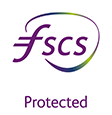Savings products that help fellow teachers
Without our savers, we couldn’t exist.
Building Societies have long worked on the basis of using collective savings deposits to support mortgage lending – we’re no different to other mutuals in that respect. But there is something unique about our savings that you might not know. Because we’re a specialist teacher mortgage lender, when you chose to save with us you are directly helping us lend to more teachers so they can buy their first homes. We think that’s something special.
Savings for corporate, charitable and educational organisations
Savings for your organisation that support teachers too
Saving with Teachers helps teachers buy homes
We’re not using your savings simply to make profits, or to enrich shareholders (we actually don’t have any of those). We are helping teachers, teachers like you, like the ones who taught you, or the ones who teach today’s children to buy a home. And the more of you who make the decision to save with us, the more teacher first time buyers with smaller mortgage deposits we can help.
Who can save with us
Because the more savings we’re trusted with, the more we can lend to teachers, our accounts are open to savers of any profession. We also have a range of savings accounts suitable for charities, community fundraising associations and for incorporated businesses too.
Protection for your savings
Your eligible deposits with Teachers Building Society are protected up to a total of £85,000 by the Financial Services Compensation Scheme (FSCS), the UK's deposit guarantee scheme. This limit is applied to the total amount you hold with Teachers Building Society. Any total deposits you hold above this £85,000 limit are unlikely to be covered.
For further information on FSCS and on eligibility for the FSCS, visit www.fscs.org.uk
Adding money to your account
When adding money to your account you must use your Society account number as the reference so that we can ensure the funds are applied to the correct account.
Once you have made your first payment, you can add money to your account at any time up to the maximum limit for the account, and within the ISA subscription limit (if applicable). To do this, ask your bank to set up a one off payment or make a regular transfer by Standing Order. For this you will need the Society’s bank details which are; NatWest, Wimborne, Account Name; Teachers Building Society, Sort Code; 60-24-43, Account Number; 60230282.
Savings FAQs
Easy access savings accounts – Easy access accounts give you the ability to add money in and withdraw your money at any time. Typically this type of account pays a slightly lower interest rate in return for greater freedoms over accessing the account. Easy access accounts typically have a ‘variable’ rate of interest – which means the interest rate can go up and down over time. Easy access accounts can also include ISAs, where your savings are free from tax.
Notice savings accounts – Notice accounts specify a number of days’ ‘advance warning’ you must give before you can withdraw money. In some cases you can access the funds immediately, subject to loss of some interest – accounts vary so check the small print on this. Notice accounts can have a fixed or variable rate of interest and the length of ‘notice’ can vary. This account is designed for people who do not anticipate needing immediate access to their funds, and typically pays a slightly higher rate of interest than an easy access account as a reward for accessing your savings less frequently. Notice accounts can include ISAs, where savings are free from tax.
ISA stands for Individual Savings Account, and is used for tax-free interest savings or investments. We offer easy access, notice, and fixed rate ISA accounts depending on whether you need easy access to your savings or are happy to leave it untouched in return for a higher rate of interest.
There are a number of HM Revenue & Customs limits regarding ISAs you should be aware of as follows:
When adding money to your account you must use your Society account number as the reference so that we can ensure the funds are applied to the correct account.
Once you have made your first payment, you can add money to your account at any time up to the maximum limit for the account, and within the ISA subscription limit (if applicable). To do this, ask your bank to set up a one off payment or make a regular transfer by Standing Order. For this you will need the Society’s bank details which are; NatWest, Wimborne, Account Name; Teachers Building Society, Sort Code; 60-24-43, Account Number; 60230282.

